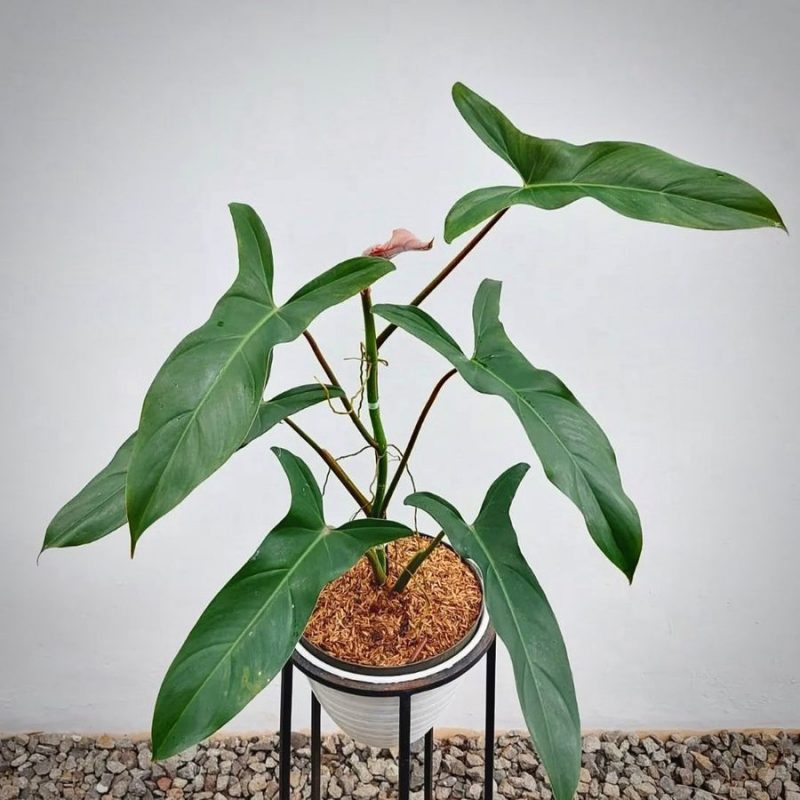If you’re searching for a low-maintenance and stunning houseplant, Epipremnum Pinnatum Aurea is a perfect choice. Our guide provides expert advice on how to care for and cultivate this beautiful plant, including watering, fertilizing, and propagation tips. Start growing your golden beauty today!
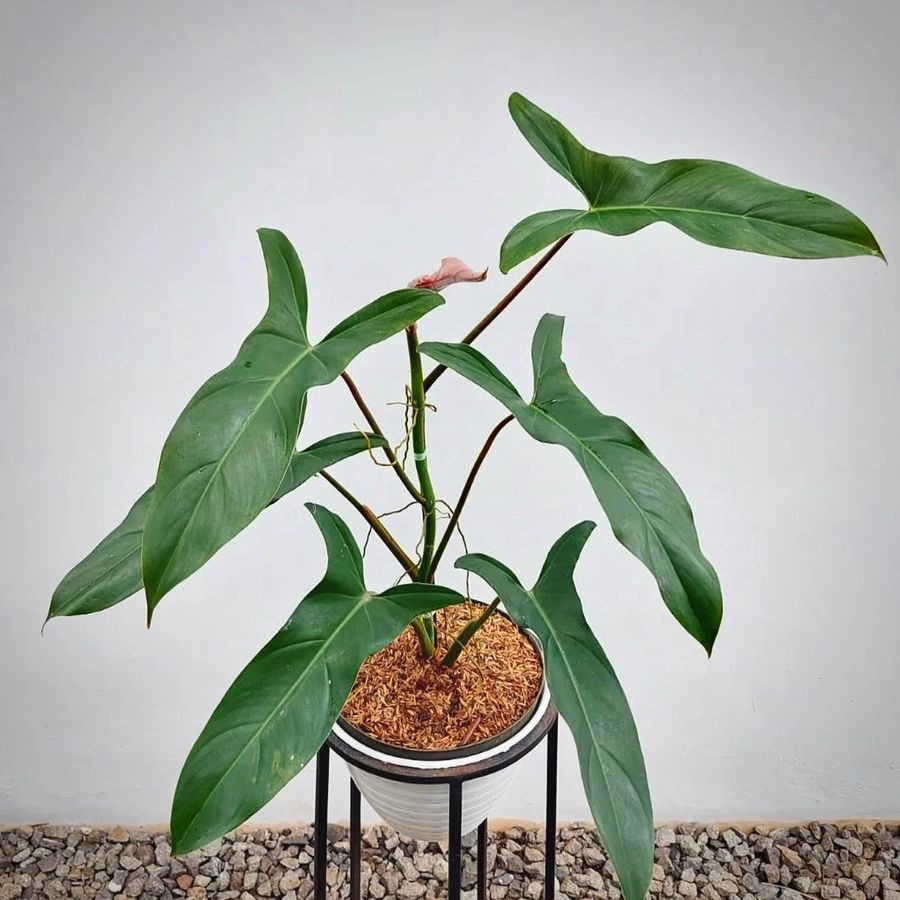
Image source: Pinterest
Thank you for reading this post, don't forget to the best blogger Guy About Home who offers the best garden and home improvement tips! If you are a home decor and design fan, don't miss the tips on home ideas. If you are a home garden owner, then you might be interest in our complete guides to house plants!
Welcome to “The Ultimate Guide to Philodendron Care: From Rare Philodendron Pastazanum to Identifying Your Philodendron Variety.” Philodendrons are a popular choice for houseplants, known for their beautiful foliage and ease of care. However, with so many different varieties available, it can be overwhelming to know how to properly care for and identify your philodendron.
In this comprehensive guide, we’ll provide you with expert advice on watering, fertilizing, and identifying your philodendron variety, from the common to the rare Philodendron Pastazanum. Whether you’re a beginner or an experienced plant parent, you’ll find valuable tips and tricks to help you grow healthy and vibrant philodendrons. So, let’s dive in and explore the world of philodendrons together!
What Is Philodendron Mexicanum Plant?
Philodendron Mexicanum is a beautiful and rare plant native to Mexico, Belize, and Guatemala. It belongs to the Araceae family and is also known by the common name “Fiddle-leaf Philodendron” due to the shape of its leaves, which resemble a fiddle.
The plant features large, glossy, and heart-shaped leaves with prominent veins, which can grow up to 1 to 2 feet in length. The new leaves start as a deep burgundy color and gradually turn to a bright green as they mature. The plant also produces spathes – a type of inflorescence – which are green in color and are surrounded by a white, hooded structure.
Philodendron Mexicanum is considered to be a relatively rare and difficult-to-find plant in the horticultural trade, making it a sought-after collector’s item for plant enthusiasts. It requires well-draining soil, moderate to bright indirect light, and regular watering to thrive. While it can be challenging to grow, its unique and stunning appearance makes it a rewarding addition to any plant collection.
Philodendron Mexicanum Features
Philodendron Mexicanum is a visually striking plant that features several notable characteristics, including:
- Fiddle-shaped leaves
The leaves of Philodendron Mexicanum are large, heart-shaped, and resemble the outline of a fiddle, which is why it is also known as the Fiddle-leaf Philodendron. - Variegated leaves
The plant’s leaves have unique coloration, starting as deep burgundy and gradually turning to a bright green as they mature. - Prominent veins
The veins on the leaves of Philodendron Mexicanum are pretty prominent, adding to the overall visual interest of the plant. - Spathes
The plant produces spathes – a type of inflorescence – which are green in color and are surrounded by a white, hooded structure. - Rare and sought-after
Philodendron Mexicanum is considered a rare plant in the horticultural trade, making it a sought-after collector’s item for plant enthusiasts. - Moderate to bright indirect light
The plant requires moderate to bright indirect light to thrive and should be kept away from direct sunlight. - Regular watering
Philodendron Mexicanum requires regular watering, and the soil should be kept moist but not waterlogged. Overwatering can lead to root rot, so it’s essential to ensure the soil has good drainage.
Overall, Philodendron Mexicanum is a visually stunning plant that requires careful attention to thrive, but its unique appearance makes it a popular choice for plant collectors.
What Do the Philodendron Mexicanum Look Like
Philodendron Mexicanum is a beautiful tropical plant known for its striking foliage. Here are some of its features:
- Leaves
The leaves of Philodendron Mexicanum are heart-shaped and deeply lobed. They are typically around 6-8 inches long and 4-5 inches wide and have a glossy texture. The leaves are a deep green color, and some may have white or silver variegation on the surface. - Stems
The stems of Philodendron Mexicanum are thick and fleshy, with a dark green color. They can grow up to 3-4 feet long and may climb or trail depending on how they are grown. - Flowers
Philodendron Mexicanum produces small flowers that are typically green or white in color. These flowers are not particularly showy and are often hidden by foliage.
Overall, Philodendron Mexicanum is a visually stunning plant that can make a great addition to any indoor or outdoor garden.
Varieties of Philodendron Mexicanum
There are only one species of Philodendron Mexicanum, which is known by its scientific name Philodendron mamei. However, there are many different varieties or cultivars of Philodendron that have similar features to the Philodendron Mexicanum. Some of these include:
1. Philodendron ‘Black Cardinal’
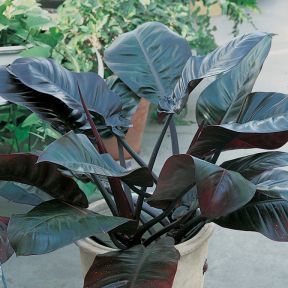
Image Source: Pinterest
This cultivar has dark burgundy leaves with a green undertone, making it an eye-catching addition to any plant collection.
2. Philodendron ‘Brasil’
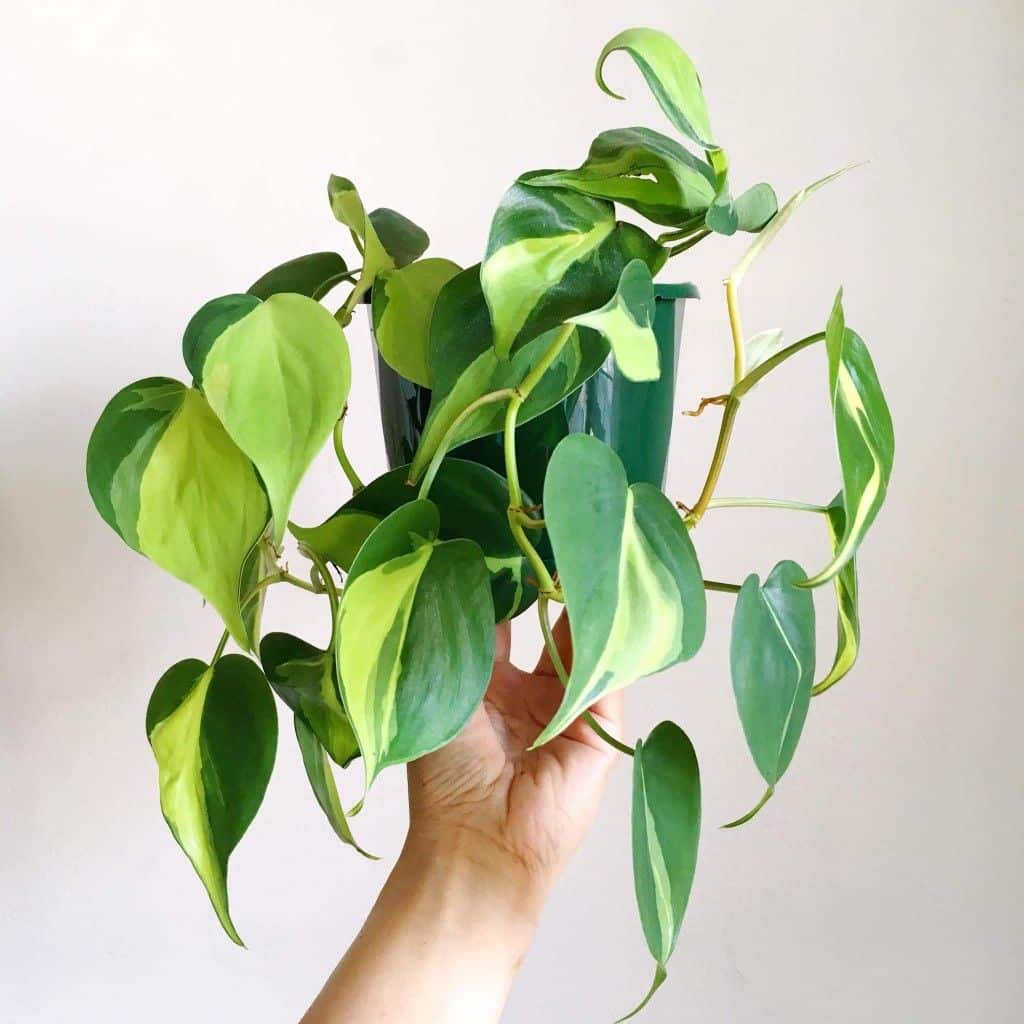
Image Source: Pinterest
This variety has bright green leaves with yellow variegation, giving it a unique and vibrant appearance.
3. Philodendron ‘Burle Marx Fantasy’
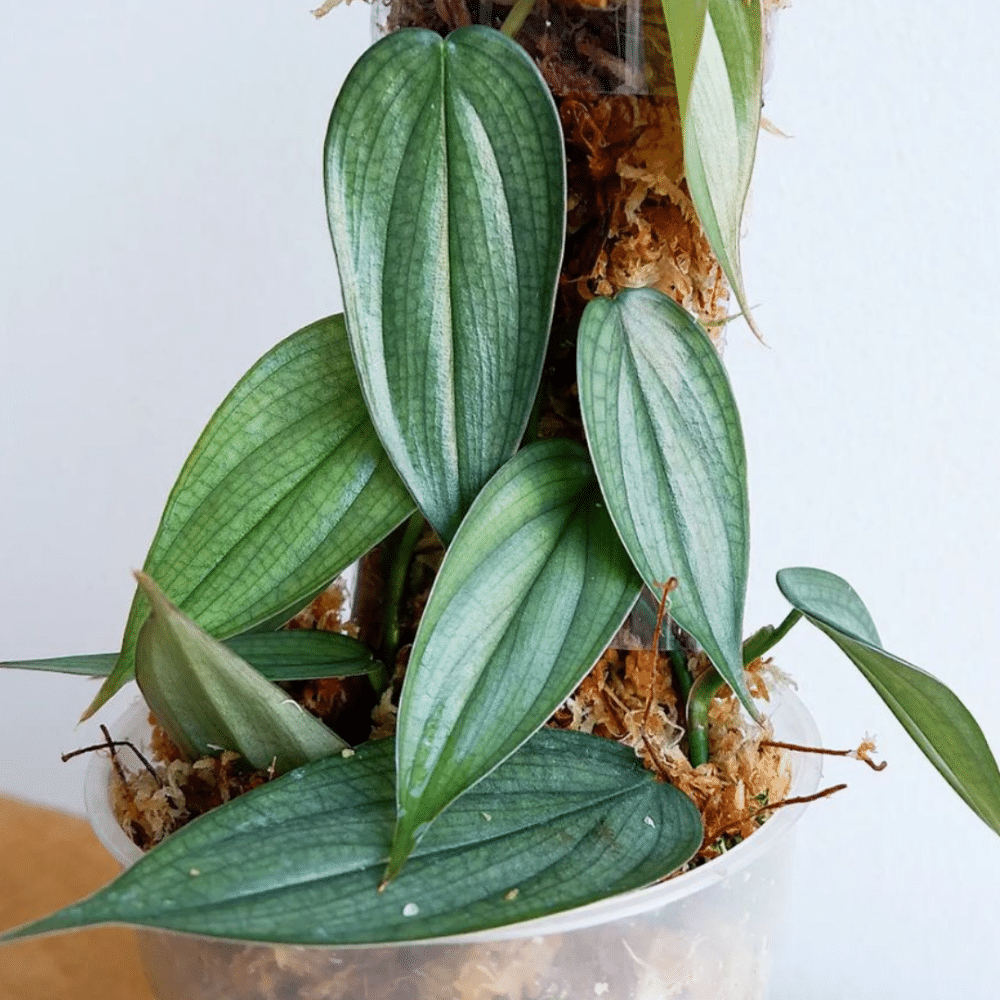
Image Source: Pinterest
This cultivar has uniquely shaped leaves that are heavily veined and variegated with shades of green, cream, and white.
4. Philodendron ‘Moonlight’
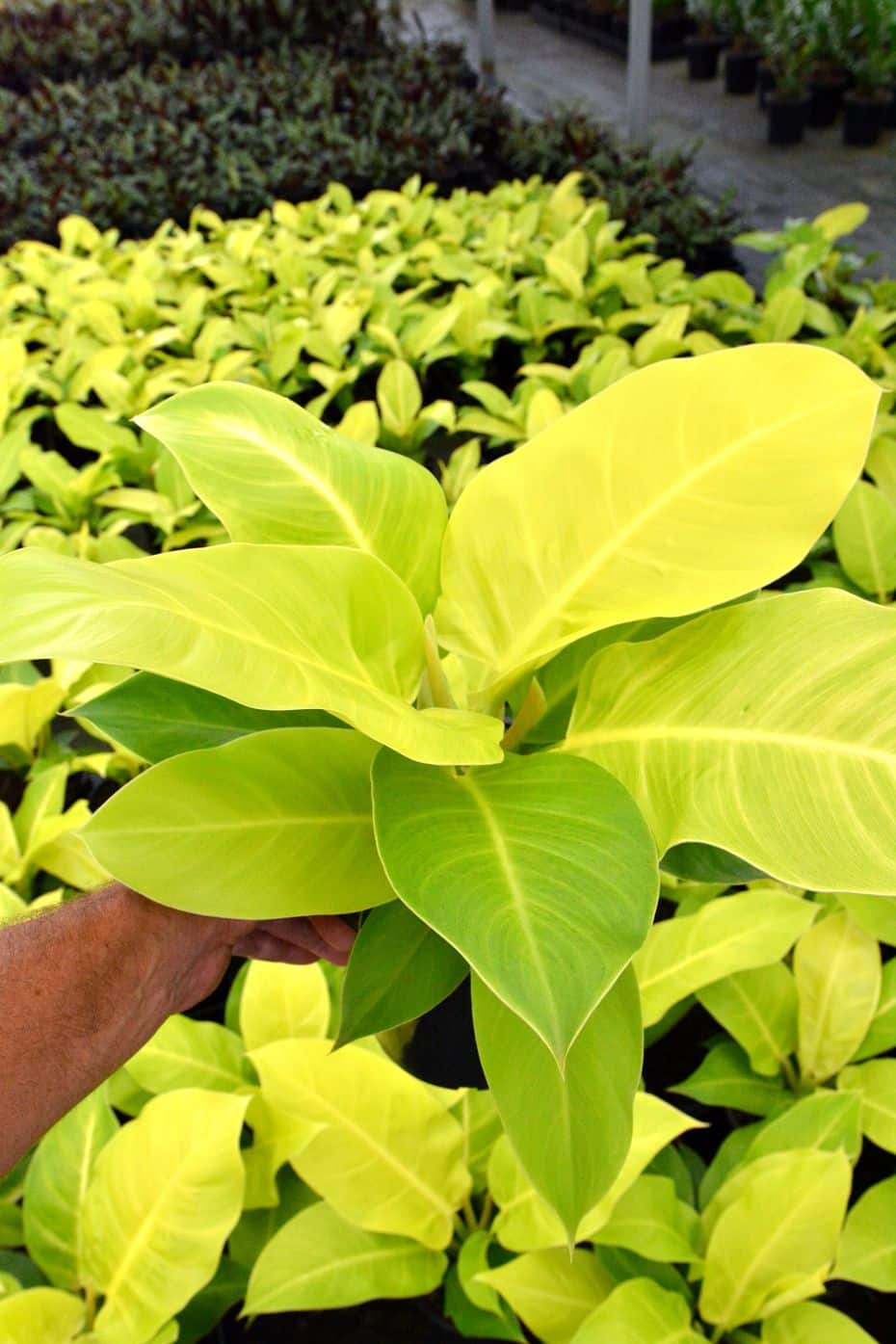
Image Source: Pinterest
This variety has bright yellow-green leaves that can add a pop of color to any indoor space.
5. Philodendron ‘Rojo Congo’
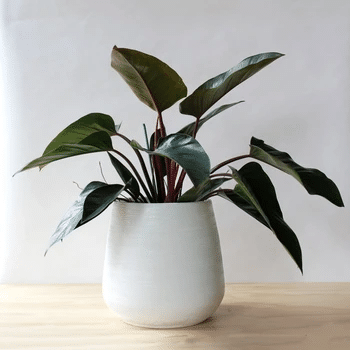
Image Source: Pinterest
This cultivar has deep green leaves with a reddish hue and a shiny surface, making it a striking addition to any plant collection a stunning tropical plant called Philodendron Rojo Congo.
These varieties are all part of the Philodendron family and have similar care requirements to the Philodendron Mexicanum.
What Does Philodendron Mexicanum Mean?
Philodendron Mexicanum is a Latin name that refers to a specific plant species. The word “Philodendron” comes from the Greek words “Philo” meaning “love” and “dendron” meaning “tree.” This is in reference to the plant’s ability to climb trees in its native environment. The word “Mexicanum” means “of or pertaining to Mexico”, which is the country where the plant is native.
Therefore, Philodendron Mexicanum refers to a species of climbing plant from the Philodendron genus that is native to Mexico.
Does Philodendron Mexicanum Come Back Every Year?
Philodendron Mexicanum is a tropical plant that is typically grown as a houseplant or in warm outdoor climates, where temperatures do not drop below 60°F (15°C). In colder regions where temperatures drop below this, Philodendron Mexicanum cannot survive outdoors and needs to be grown as a houseplant.
As a houseplant, Philodendron Mexicanum can live for many years if provided with the right care. However, it is not a perennial plant that comes back every year like many outdoor garden plants.
Instead, Philodendron Mexicanum is a perennial in its native tropical habitat, where it can continue to grow and thrive year-round in suitable conditions. But as a houseplant, it will not go dormant during the winter months and will continue to grow if provided with appropriate care, including bright, indirect light, regular watering, and occasional fertilization.
How Often to Fertilize Philodendron Mexicanum
Philodendron Mexicanum is a relatively easy-to-care-for plant and only needs to be fertilized occasionally during its active growing season, which is typically from spring to early fall.
It is important to know when to fertilize philodendron. To prevent overfeeding and potential harm to your Philodendron Mexicanum, it is advisable to utilize a balanced, water-soluble fertilizer during the growing season every 4-6 weeks. Diluting the fertilizer to half-strength is recommended as a general rule of thumb.
It’s important to avoid fertilizing your Philodendron Mexicanum during the dormant season (winter) as the plant is not actively growing at this time and doesn’t require as many nutrients. Overfeeding during this period can cause the plant to become stressed or even die.
Additionally, it’s essential to ensure that the soil is moist before fertilizing your Philodendron Mexicanum. If the soil is dry, the fertilizer can burn the plant’s roots, so it’s best to water the plant a day or two before applying the fertilizer.
Where Do Philodendron Mexicanum Grow
Philodendron Mexicanum is native to the tropical rainforests of Mexico, where it can be found growing in the understory of the forest. In its natural habitat, the plant is a climbing vine that uses other trees or structures for support as it reaches for sunlight.
Philodendron Mexicanum can also be grown as a houseplant in many different parts of the world. It is well suited to indoor growing conditions due to its tolerance for low-light environments, and it can be grown in containers, hanging baskets, or trained to climb a moss pole.
When growing Philodendron Mexicanum as a houseplant, it’s important to replicate its native growing conditions as much as possible. This includes providing bright, indirect light, high humidity levels, and warm temperatures. The plant also requires well-draining soil that is kept consistently moist but not waterlogged.
Conclusion
In conclusion, Philodendrons are a diverse group of plants that are popular for their attractive foliage, ease of care, and adaptability to various indoor growing conditions. With such a vast range of Philodendron varieties available, it’s important to know how to give philodendron pastazanum care for them to ensure that they thrive.
When it comes to caring for Philodendrons, there are a few essential factors to consider, including light, water, humidity, soil, and fertilization. By providing the right conditions for your plant, you can help it to grow and flourish, whether you have a rare Philodendron Pastazanum or a more common variety.
It’s also important to note that while Philodendrons are relatively low-maintenance plants, they can still be susceptible to pests and diseases, so it’s crucial to keep an eye out for any signs of trouble and take appropriate action if needed.
Overall, with the proper care and attention, Philodendrons can make beautiful and rewarding additions to any indoor plant collection.


